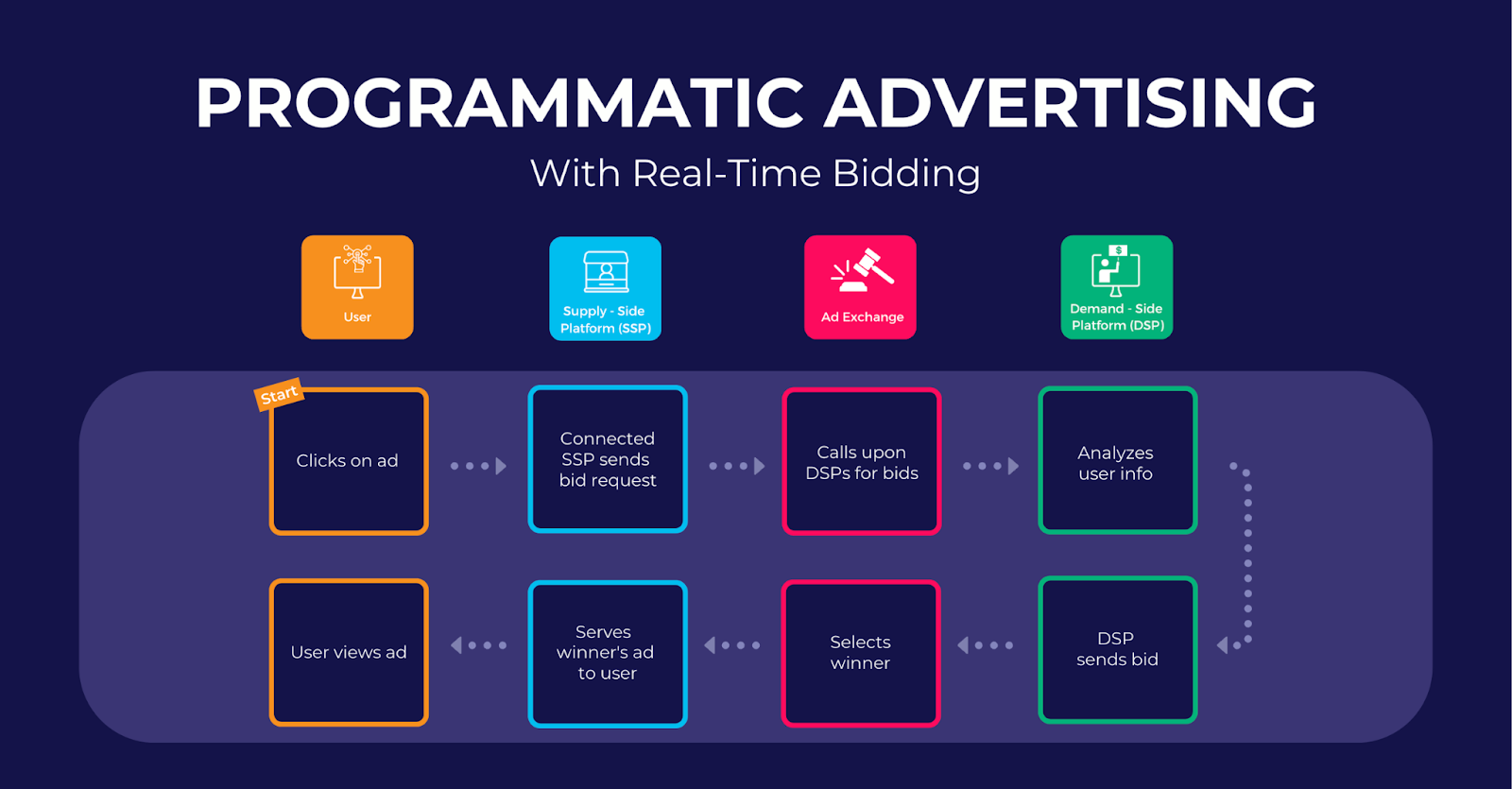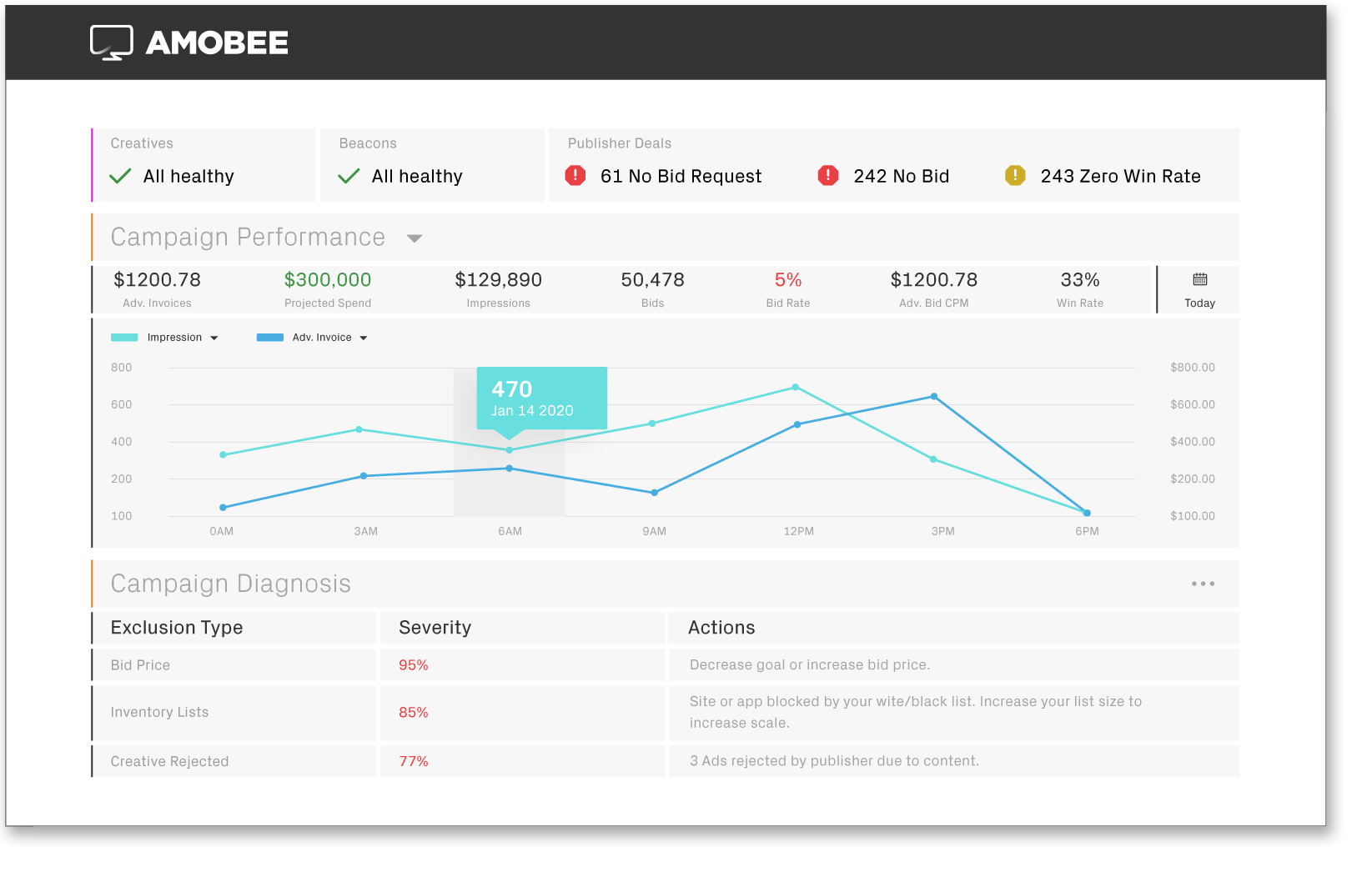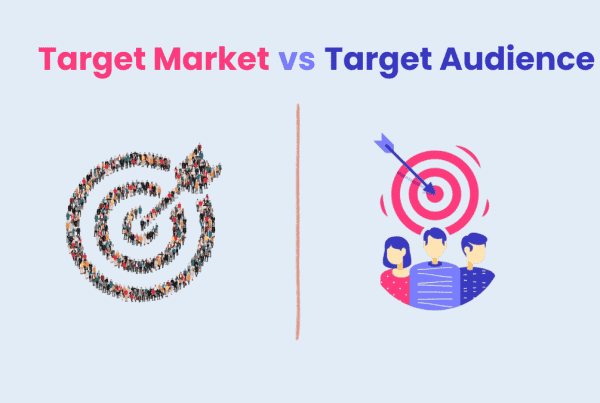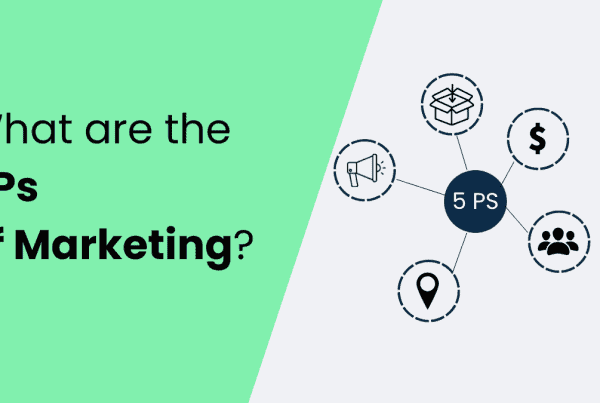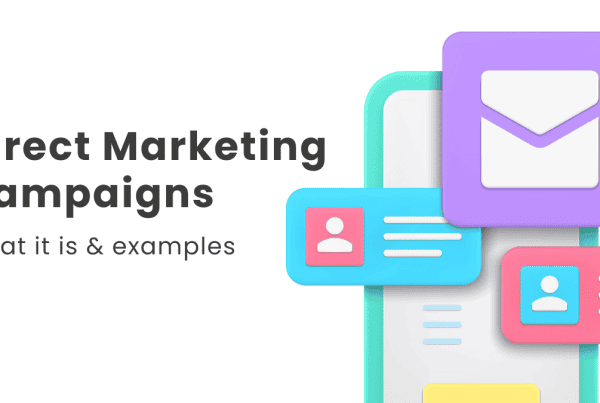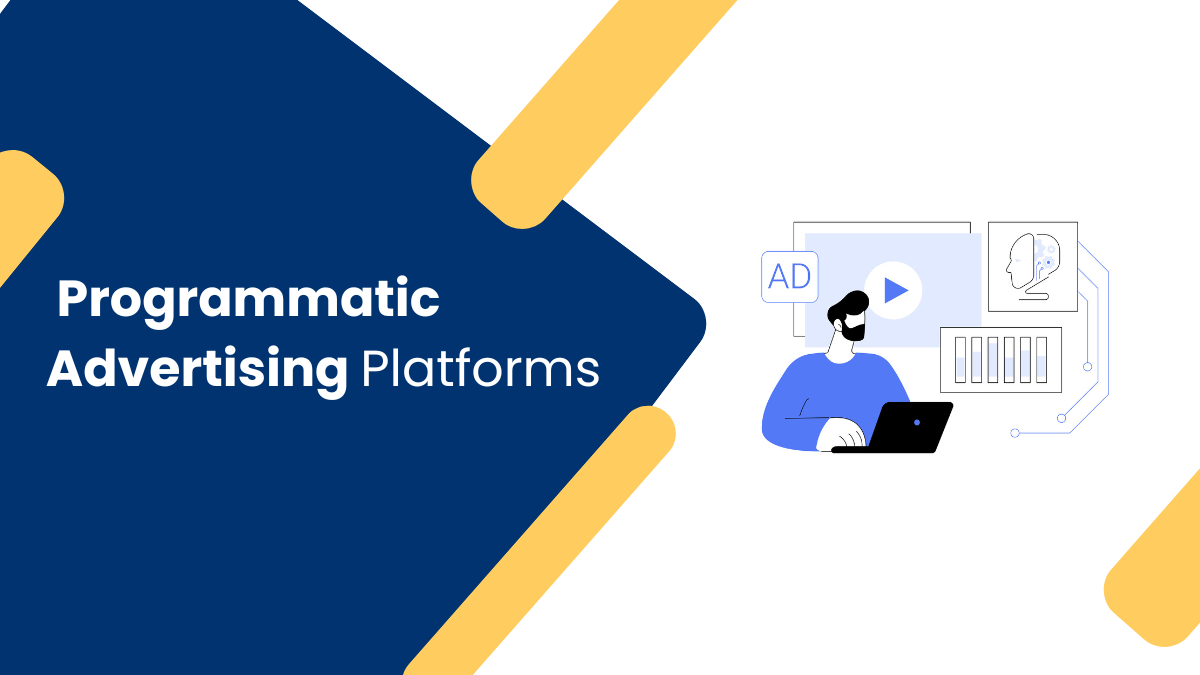
Advertising has changed a lot from just putting ads in newspapers or on billboards by the road. One of the biggest improvements lately is something called programmatic advertising. This fancy term means using technology to decide where and when to show ads online. It’s a nice way for companies to make sure they’re showing their ads to the right people at the right time, thus making it more efficient.
Programmatic advertising is an important aspect these days. It’s grown a lot and is now the main way businesses advertise online globally. In 2021, about 88% of money spent on digital ads in the U.S. was through programmatic methods, totaling a massive $81 billion. And it’s not stopping there! Thanks to AI getting even smarter, programmatic ads are always getting better. They’re becoming more precise, personal, and effective, thanks to things like artificial intelligence and machine learning.
We’ll check out the best programmatic advertising platforms for 2024 and beyond. We’ll dig deep into what they offer, how they help, and what’s new with them. Whether you’re just starting with online ads or skilled at it and want to try new tools, this article will give you useful info about programmatic advertising platforms in 2024.
What is Programmatic Advertising?
Programmatic advertising is an automated process that is transforming the traditional method of purchasing and selling advertisements. It’s like setting up a smart robot to buy advertising space for you. Instead of talking to people and negotiating prices for where and when your ads will show up, you use a computer program. This program automatically decides the best places to put your ads based on who you want to see them, how much you want to spend, and other rules you set up. It makes buying ads faster and can help you reach the right people at the right time without having to do all the work manually.
To understand how it works, we need to understand the concepts of Supply-Side Platform (SSP) and Demand-Side Platform.
Supply-Side Platform (SSP)
Sell-Side Platform or SSP, is a technology that allows publishers (website owners, app developers, etc.) to connect their ad inventory with ad exchanges. The main purpose of an SSP is to facilitate the sale of ad space on websites and applications based on impressions.
How It Works:
- Publishers integrate their inventory with the SSP.
- The SSP connects publishers to multiple ad exchanges, demand-side platforms (DSPs), and ad networks.
- By doing so, SSPs allow publishers to reach a broader pool of potential buyers.
- Publishers can filter ads based on criteria (such as advertiser preferences) and set different rates for ad spaces.
- The goal is to maximize revenue for publishers by efficiently selling their impressions.
Demand-Side Platform (DSP)
A deman-side platform or DSP is kind of a programmatic software that allows advertisers to automate and centralize media purchases from many sources. As the name implies, DSPs work on the demand side of the advertising equation.
- Advertiser Goals: Advertisers seek inventory that helps them reach the right audiences at the right time, all within a defined budget. With DSPs, advertisers can programmatically buy display ads, video ads, and audio ads across various platforms.
- Audience Targeting: Advertisers use DSPs to reach specific audiences based on demographics, shopping behavior, and browsing signals. Data Management Platforms (DMPs) play a crucial role in audience segmentation.
Amazon DSP enables marketers (both those who sell on Amazon and those who do not) to target engaged audiences with brand-safe inventory (a category of online advertising space that is considered low-risk in terms of brand reputation), including Amazon-owned sites like IMDb and Twitch and prominent publishers’ sites.
DSPs and SSPs are connected; DSPs assist marketers in determining which ones to buy and at what price (supply side). SSPs optimize and obtain the best price for publishers’ inventory (maximizing yield). They facilitate programmatic media buying by bringing together marketers and publishers in the digital advertising supply chain.
The notable fact is that the entire process takes less than 100 milliseconds, resulting in real-time ad distribution. Programmatic advertising optimizes ad placement by combining SSPs, DSPs, and lightning-fast transactions. It’s like having a smart tool oversee your advertising, which might lead to more sales and lower expenditures.
Types of Programmatic Advertising
There are two main types of programmatic advertising:
- Real-Time Bidding (RTB): It is a way of buying and selling ads online super quickly. It’s like an auction that happens instantly, just like how stocks are bought and sold in markets. Here’s how it works: advertisers bid for the chance to show their ad whenever a person is about to see a webpage. Whoever wins the bid gets their ad shown right away on that webpage.
- Private Marketplace (PMP): Private Marketplace (PMP) is a special online spot where top publishers sell their ad space only to a chosen few advertisers. It’s like an exclusive club. The publishers decide how much they want to charge, and only advertisers who are willing to pay that price can join in the auction. It’s a bit like having a secret handshake to get access to the best ads online!
Programmatic advertising has changed how businesses advertise online, making it faster and easier. It helps advertisers find exactly the people they want to reach and lets them do it on a large scale. At the same time, it helps publishers make sure they’re earning money consistently from ads.
Best Programmatic Advertising Platforms in 2024
The world of online advertising is big and full of different options. Here, we’ll take a look at the best programmatic advertising platforms of 2024. We’ll talk about where they come from, what they can do, what makes them special, and what they’ve achieved recently.
Kedet
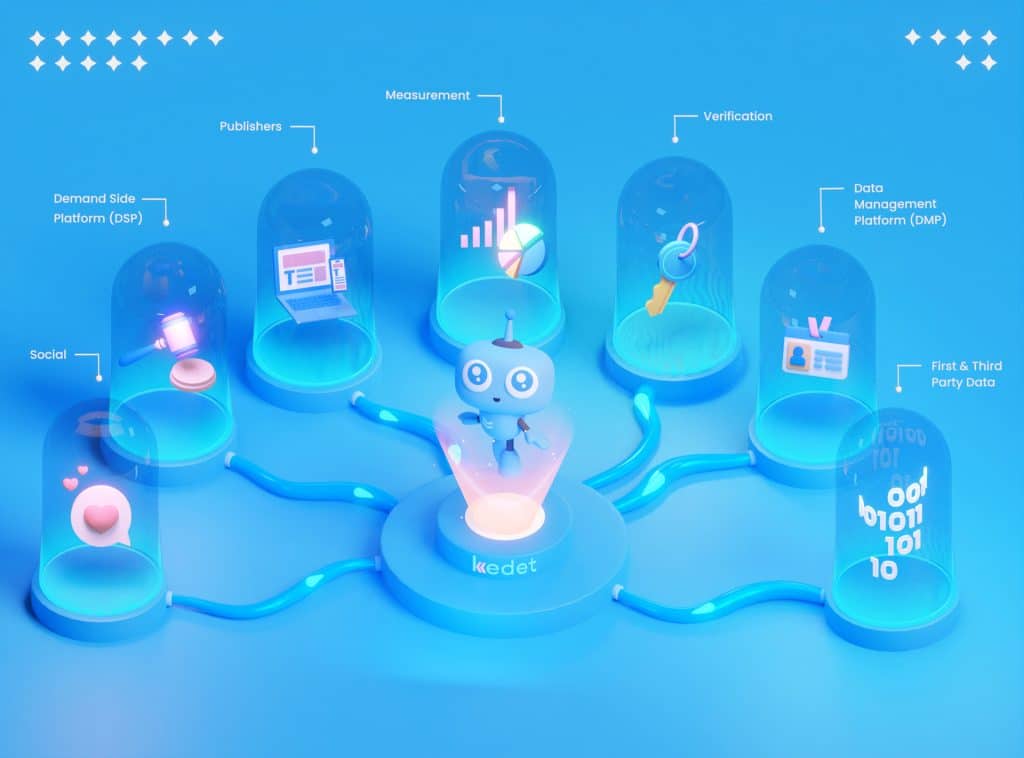
Image Source
Kedet, created by War Room Inc., is a complete programmatic advertising platform for handling digital ad campaigns. It also provides excellent ad space, works with many other tools, gives instant reports, and targets audiences precisely.
Key Features:
- Consolidates various technologies: It combines everything you need for managing digital ad campaigns, like measuring their effectiveness and making sure they’re shown to the right people.
- Provides a unified solution: To manage digital ad campaigns across multiple channels.
- Uses AI: To target certain groups of people based on their age, interests, and other factors.
- Bidding system: It uses a bidding system to decide which ad gets shown and when.
- It simplifies, speeds up, and reduces the cost of the advertising process.
Kedet is an all-in-one platform that gets into lots of markets, works across different channels, and is completely open about campaign details. Kedet has got no recent updates but it has proved to be the best out there.
Amobee
Amobee is a big company in digital marketing and is owned by Singtel. It’s all about three important things: people use devices with different sizes of screens, they like watching videos, and they care about their privacy. Amobee helps companies, ad agencies, and media firms bring together audiences to make their ads work better on all devices including TVs, Mobile, computers, etc., and digital media/social media platforms.
Special Features:
- Channel Functionality: It works for different types of ads, like on websites, videos, and mobiles.
- Campaign Management: It lets advertisers see all their ads and buys in one place and changes things to make them work better.
- Reach: It shows how much and how good the places are where ads can go.
- Brand Safety: This platform makes sure ads go on websites that won’t hurt a company’s reputation.
- Fraud Protection: It makes sure ads reach real people, not bots or fake websites.
- Frequency Capping: It stops people from seeing ads too many times.
- Budget Pacing: Amobee helps spend the right amount of money each day or week.
- Creative Optimization: It makes ads look better to get more people interested.
Amobee stands out as one of the best programmatic advertising platforms because it can bring together audiences from different places and knows how people see things now. This makes it easy for advertisers to find their audience no matter where they are or what they’re watching. In 2024, Amobee has rated 4.3 stars with 74 reviews on Gartner Peer Insights.
Digilant
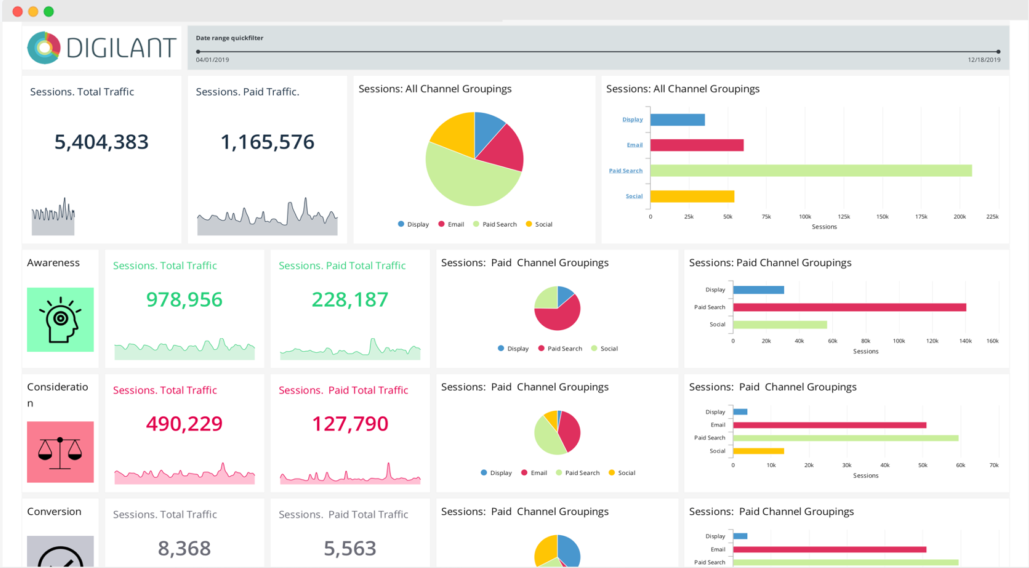
Digilant is a company in marketing technology that started in 2009 as Adnetik with support from the Rodes family in Barcelona. In July 2012, it changed its name to Digilant to show it wasn’t connected to Havas (a multinational advertising and public relations company) anymore. This programmatic advertising platform helps agencies and brands link what they spend on digital ads to the money they make. It does this by using strategies for digital advertising that work across different channels and rely on data to be effective. Digilant is part of ispDigital, a group of companies that offer new ways for brands and agencies to do marketing.
Key Features:
- All-Around Advertising: Digilant has tools for programmatic, search, and social advertising that fit what advertisers need at every stage.
- Using Data: It uses data for everything it does, ensuring it helps brands and agencies grow.
- Helping Clients: This Software doesn’t just help from its Boston office; it has people in other places too, helping clients with support and solutions for their campaigns.
Digilant’s USPs include how it can work across different channels and its focus on using data. It offers a new way of doing things that helps clients. By combining big ideas with being able to do things on a big scale, Digilant can understand what consumers want, analyze campaigns, and start new advertising plans that help businesses move forward.
Digilant has also been getting ready for when third-party cookies won’t be used anymore, which is set to happen later in 2024.
Choozle
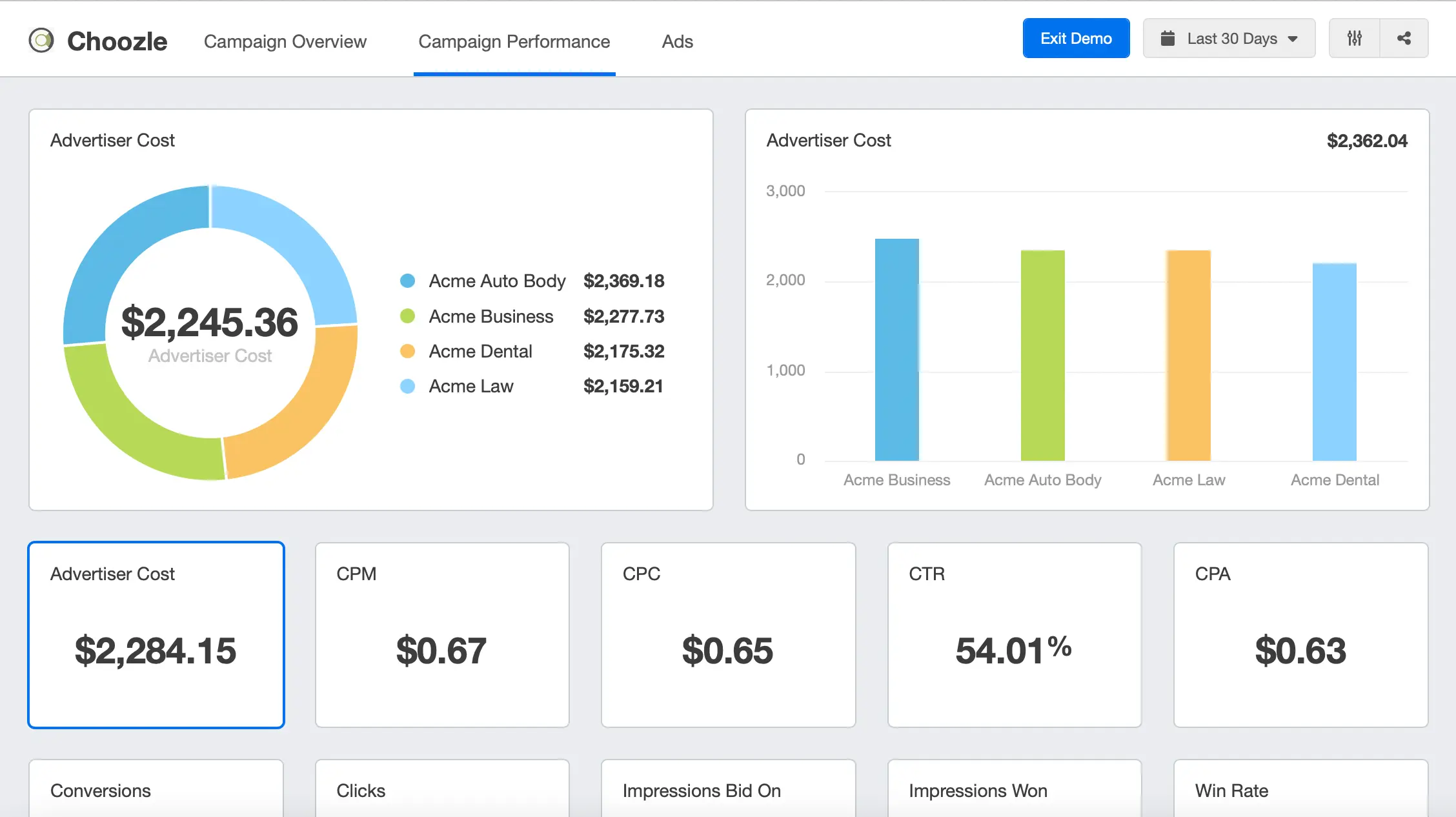
Choozle is a programmatic advertising platform that anyone can use themselves. It started in 2012 and is meant to make it easy to do display, video, and mobile advertising. Choozle uses a lot of information about what people do online to help with advertising campaigns. It can work across different types of ads like videos, mobile ads, and more, all from one simple place. Choozle is located in Denver, Colorado, in the United States.
Key Features:
- Different Types of Advertising: It works for different types of ads like displays, videos, and mobile ads.
- Managing Campaigns: It lets advertisers see all their ads and buys in one place and changes things to make them work better.
- Reaching People: It shows how much and how good the places are where ads can go.
- Making Sure Ads Are Safe: It makes sure ads go on websites that won’t hurt a company’s reputation.
- Protecting Against Fraud: It makes sure ads reach real people.
- Limiting How Often People See Ads: It stops people from seeing ads repeatedly.
- Setting Budgets: It helps you spend money within your budget.
Choozle’s special points include giving lots of ways to target ads to meet advertising goals. By trying different kinds of ads in one campaign, advertisers can test different audiences or ways of targeting and change things quickly based on how well they’re working. It also gives detailed reports about things like what kind of ads are working best, where they’re being shown, and what devices people are using, which helps make campaigns better.
Zeta Marketing Platform
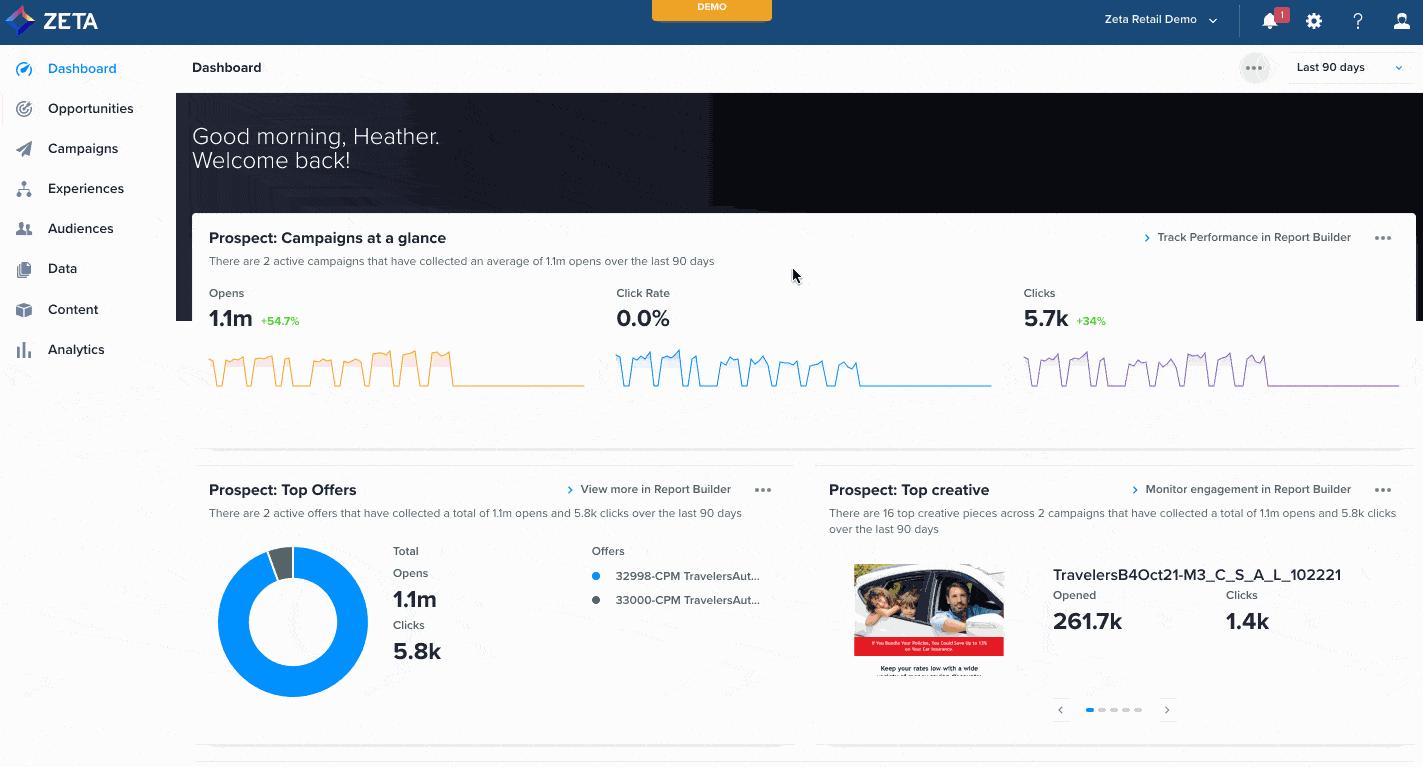
The Zeta Marketing Platform (ZMP), formerly known as Ignition One, is a powerful programmatic advertising platform that empowers brands to achieve better business outcomes through personalized marketing.
Key Features:
- Real-time view: The ZMP is a technology platform that provides clients with a real-time view of prospects and existing customers.
- It uses AI: It leverages AI, it creates personalized experiences across every channel at unparalleled depth and scale
- Dynamic Evolution: It adapts to changing brand and marketer needs by incorporating new technologies. It activates across channels like DSP, DCO, social, email, mobile, and more.
- First-Party Data Integration: It operates on an event-driven architecture for real-time data processing. It seamlessly integrates first-party data via RESTful APIs, a lightweight JavaScript library, or SFTP batch transfers.
In the marketing field, understanding consumer intent is paramount. Zeta’s approach goes beyond mere interest—it extracts insights related to intent. This shift allows marketers to unlock unprecedented success. However, the real magic lies in aligning this data to individual identities. By doing so, marketers can create hyper-targeted and effective campaigns, reaching the right audience with precision. In summary, Zeta’s focus on intent and identity transforms marketing outcomes.
Sizmek, now Amazon Ad Server
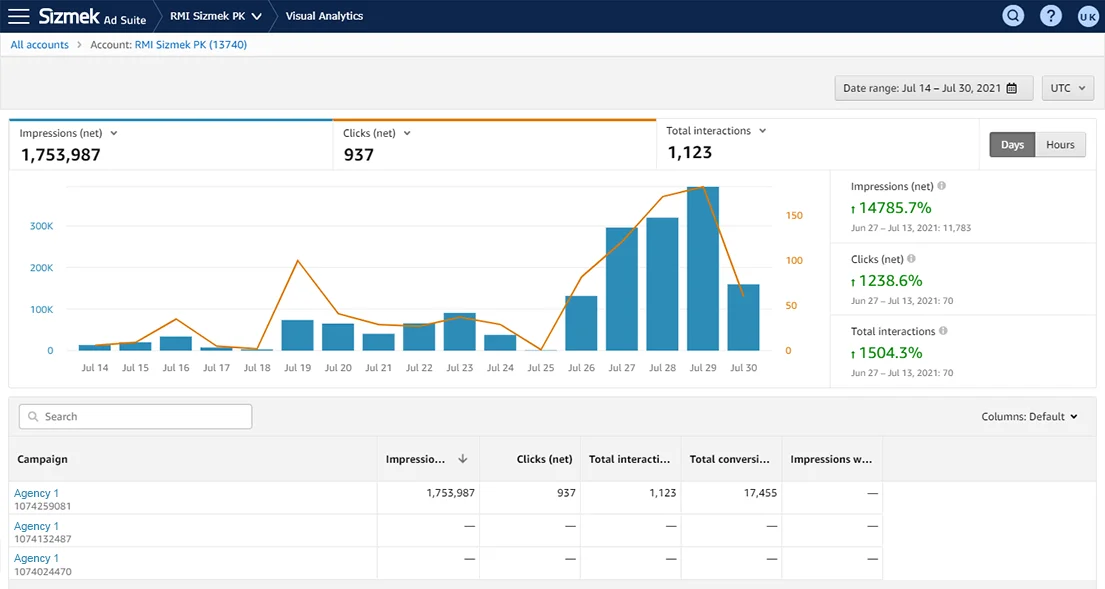
Sizmek, which used to be called MediaMind and became part of Amazon Advertising in 2019, is a programmatic advertising platform that helps companies buy advertising space. It started in 2009 and serves advertisers and agencies from all over the world. Sizmek’s digital marketing suite uses a powerful data management platform to help companies do better with digital marketing on all kinds of devices.
Key Features:
- Using Data: It helps companies see how their ads are doing, understand what customers are doing, and control how much they spend.
- Putting Ads in the Right Places: It helps companies put their ads where they’ll work best.
- Making Ads Look Good: It helps make ads better to get more people interested.
- Using Sizmek MDX Platform: It helps manage ad campaigns and see how they’re doing.
- Using Sizmek Dynamic Creative Solution: It helps manage ads’ content.
#Note: MDX platform focuses on campaign management, like overall campaign (multiple ads, multiple types of ads). Dynamic Creative Solution focuses on ad content specifically.
What makes Sizmek different is that it can handle everything about an ad, from when it’s first thought of to when someone buys something because of it. It uses data in five different ways to help predict what will work best in marketing — the ads themselves, who see them, where they’re shown, what they look like, and how much they cost. Sizmek’s technology helps companies aim ads at different groups of people even if it’s all part of the same campaign.
Recently, Amazon said they were getting rid of the Sizmek ad server and replacing it with the Amazon Ad Server. This change is expected to be done by the end of 2024. Even though Sizmek is going away, its impact on advertising will still be felt.
Criteo
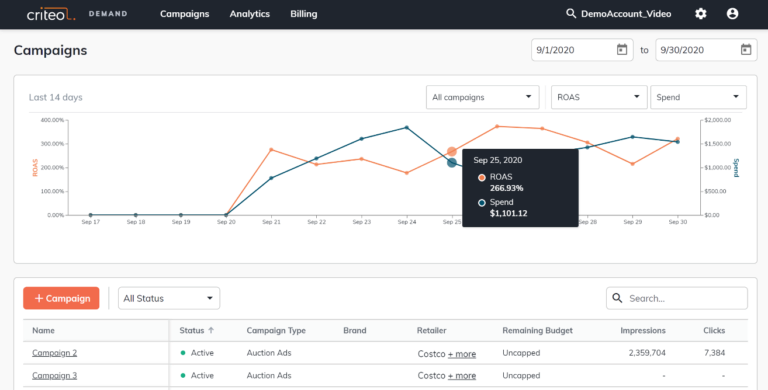
Criteo is a big company that deals with advertising and helping businesses sell things online. It started in Paris, France, in 2005. For the first four years, it focused on developing its products and launched its first one in April 2008. Criteo is known for its digital advertising solutions and has created a platform called Commerce Media Platform, which helps with planning ads, measuring their success, optimizing campaigns, managing data and inventory, and more.
Key Features:
- Smart Technology: It uses advanced artificial intelligence to make ads more efficient and effective.
- Huge Data: It has access to a lot of information about shopping habits, which helps in targeting ads better.
- Top Retailers: It allows advertisers to put their ads on popular retail websites.
- Quality Placements: It ensures that ads are shown in good places on the internet.
- Targeted Audiences: It aims ads at people who shop online based on their behavior.
- Full Tracking: It follows how well ads work from the beginning to the end.
- Focus on Results: It works hard to achieve the goals set for each ad campaign.
- Bringing Everyone Together: It connects advertisers and websites where ads can be shown in one place.
Criteo specializes in showing ads to people who have looked at products on a business’s website before. Its smart technology saves time and effort for clients, helping them know where to focus their efforts without doing a lot of research. This personalized attention helps them reach the right customers without wasting time.
In 2024, Criteo shared its best financial results ever for the last quarter and the whole year. In the last quarter, they spent $1.3 billion on advertising, and over the whole year, it was $4.1 billion, which was 30% more than the year before. They also spent $125 million buying back their shares in 2023, and in February 2024, they decided to spend another $150 million doing the same thing.
By knowing what each platform is good at and what it offers, advertisers can decide where to spend their money on digital ads wisely. As programmatic advertising keeps changing, keeping up with new platforms and technologies is important for doing well in digital advertising.
The Role of Programmatic Advertising Platforms in Programmatic Advertising
Programmatic advertising platforms are important in programmatic advertising. They’re like the go-between for advertisers and publishers. They make it easy for ads to be bought and sold quickly and smoothly.
Here’s how programmatic advertising platforms facilitate programmatic advertising:
- Automated Buying and Selling: You don’t have to talk to someone in person to buy or sell ad space. Instead, advertisers can decide how much they want to spend, make offers, and pick who to show their ads to. Then, the platform takes care of the rest, automatically buying ad space that fits those choices.
- Real-Time Bidding (RTB): Ad platforms create a place where ads are sold in a quick auction. Advertisers bid in real-time, and whoever offers the most money gets their ad shown.
- Targeting and Personalization: Most Ad platforms gather and study information about what people do online. This helps advertisers show their ads to certain groups of people based on things like age, where they live, and what they like to do online. So, users see ads that are more about what they’re interested in.
- Performance Tracking and Optimization: Programmatic advertising platforms give advertisers tools to watch how well their ads are doing right away. They can see how many people looked at the ad, clicked on it, or bought something because of it. This information helps them make their future ads even better.
- Integration with Other Platforms: These platforms often link up with other tools for marketing and checking data. This makes it easier for advertisers to manage all their online marketing activities in one place.
Modern-day Ad platforms streamline the process of programmatic advertising, making it accessible and effective for businesses of all sizes. They are the engines that power the dynamic, data-driven world of modern digital advertising.
Choosing the Right Programmatic Advertising Platform
Picking the correct ad platform is a big decision that can affect how well your digital ads do. Here are some things to think about when choosing one:
- Targeting Abilities: Make sure the platform has strong options to target your specific audience based on things like age, interests, and what they do online.
- Ad Types and Places: Check if the platform can handle different types of ads (like pictures or videos) and where they can go (like on social media or websites).
- Easy to Use: It should be easy for anyone to figure out how to use it, especially if you’re new to it. And if you need help, there should be good support available.
- Tracking and Reports: The platform should give you lots of information about how your ads are doing so you can make them better.
- Cost and Value: Think about how much you can spend and if the platform is worth it for what you get back.
- What People Say: See what other advertisers think about the platform and if it has a good reputation.
Make sure the platform you choose fits your business goals and the people you want to reach. Every platform has good and bad points, and what’s great for one business might not be as good for another. For instance, a business selling to other businesses might do better on LinkedIn, while one selling to consumers might like Facebook or Instagram more.
You should aim to find the best platform that gives exactly what you want. By taking the time to research and understand the different options, you can make an informed decision that will help drive success in your digital advertising efforts.
Conclusion
We’ve explored seven major programmatic advertising platforms in 2024. Each platform has its unique features and strengths, tailored to various business needs.
These platforms use advanced technologies like AI and machine learning to create highly targeted and efficient ad campaigns. They offer a range of features, including managing campaigns, ensuring brand safety, preventing fraud, and optimizing creativity.
Furthermore, these platforms have distinct selling points, such as bringing audiences together across different platforms, introducing new app monetization strategies, and providing a marketplace for developers, users, and advertisers.
Looking ahead, the programmatic advertising landscape continues to evolve with trends like AI, cookieless identity solutions, generative AI, consumer attention strategies, and adapting to election cycle advertising.
You need to stay informed about trends and make wise decisions to make the most of programmatic advertising. Remember, success in advertising isn’t just about reaching more people but reaching the right people with the right message at the right time.
References:

